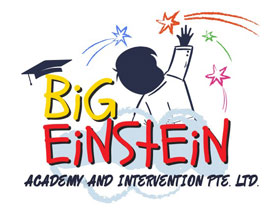How to make your children’s learning better?
Play therapy is an effective method utilized to assist children in expressing their feelings, enhancing their social skills, and working through challenging experiences. By engaging in play, children can convey messages in ways that verbal communication often cannot, which makes this form of therapy especially beneficial for those facing issues such as anxiety, trauma, autism, ADHD, or other emotional and behavioural difficulties.
If you’re considering incorporating play therapy into your practice or using it at home, this guide will walk you through the essential steps to get started.
Let’s explore:
- What play therapy is and why it works
- The key steps to starting play therapy
- Best practices for making therapy sessions effective
What is Play Therapy and Why is it Effective?
Play therapy is a structured, evidence-based approach that allows children to express their thoughts and feelings through play. Instead of relying solely on verbal communication, children use toys, games, art, and role-playing to process emotions and experiences.
Play therapy is a powerful tool used to help children express emotions, develop social skills, and process difficult experiences. Through play, children communicate in ways that words cannot, making this therapy particularly effective for those struggling with anxiety, trauma, autism, ADHD, or other emotional and behavioural challenges. This structured, evidence-based approach encourages kids to use toys, games, art, and role-playing to articulate their thoughts and feelings, bypassing the limitations of conventional verbal communication.
Play therapy is highly effective for several reasons:
✔ It provides a safe space for children to express their complex emotions, allowing them to communicate feelings that might be difficult to verbalize.
✔ The process encourages the development of self-regulation and coping skills, helping children manage their emotions better.
✔ It enhances communication and problem-solving abilities, equipping children with tools to navigate challenges.
✔ Additionally, play therapy can strengthen the relationships between children and their caregivers, fostering healthier interactions.
Steps to Getting Started with Play Therapy
1. Learn the Basics of Play Therapy
Before beginning play therapy, it’s essential to understand its foundations. Research different approaches, such as:
- Child-Centered Play Therapy (CCPT): Focuses on allowing the child to lead the session in a non-directive way.
- Cognitive-Behavioural Play Therapy (CBPT): Incorporates structured activities to modify thoughts and behaviours.
- Filial Therapy: Teaches parents how to engage in therapeutic play at home.
Reading books, taking online courses, or attending workshops led by registered play therapists can help you gain confidence in using play therapy techniques.
2. Set Up a Play Therapy Space
Creating a safe and engaging play environment is essential for effective therapy. A play therapy room or corner should include:
✔ A variety of toys: Dolls, action figures, puppets, cars, and playsets for role-playing.
✔ Art and creative supplies: Crayons, paint, playdough, and coloring books for expressive activities.
✔ Sensory tools: Fidget toys, sand trays, weighted blankets, and stress balls for emotional regulation.
✔ Board games and puzzles: Used to develop social and cognitive skills.
It’s important to ensure the space is quiet, private, and free from distractions, allowing children to feel safe to express themselves.3. Choose the Right Play Therapy Techniques





Comments are closed